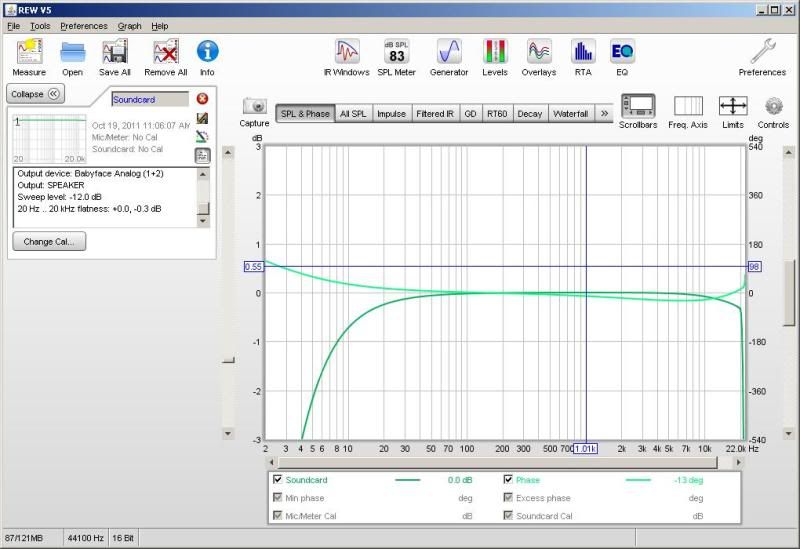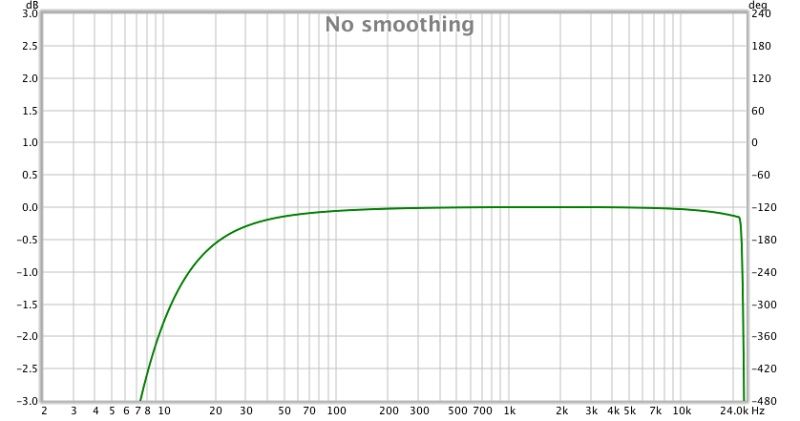Topic: Babyface frequency response
I have the Babyface and have gotten some worse than expected low frequency response measurements for the device itself. Here's how it happened:
I loaded up Room EQ Wizard (REW) (acoustic measurement program for taking room response measurements). REW first requires a frequency response test of the soundcard itself, in order to account for its influence when subsequently measuring the room response. It does this using a frequency sweep when the soundcard output is connected directly back to its input.
So I connected the Babyface Analog R output directly to analog R input (i.e. the two breakout cables directly connected), and performed the frequency response sweep test with a sample rate setting of 44.1 kHz in REW and Babyface set to 44.1 kHz as well.
The Babyface manual has frequency response specs of:
AD analog IN: Frequency response @ 44.1 kHz, -0.1 dB: 5 Hz – 20.6 kHz
DA analog OUT: Frequency response @ 44.1 kHz, -0.5 dB: 5 Hz - 22 kHz
However, the low frequency results for the Babyface don't extend even close to as low, falling off to -0.5 dB already by 40 Hz and falling off rapidly from there:
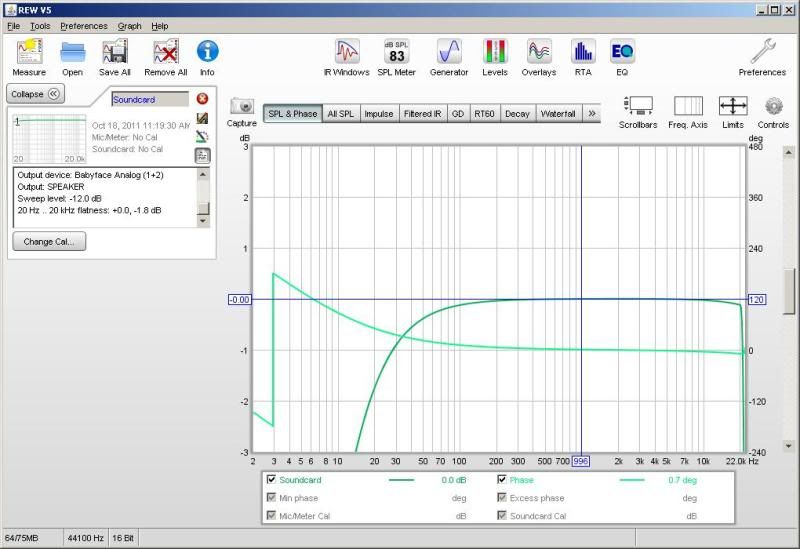
I figured this had to be wrong, as I had also run the same exact test with the same settings against my old $170 Echo Mia still installed in my PC (with a short TRS patch cord for the loopback) and the low frequency results had looked as expected, reaching down to about -1 dB at 5 Hz:
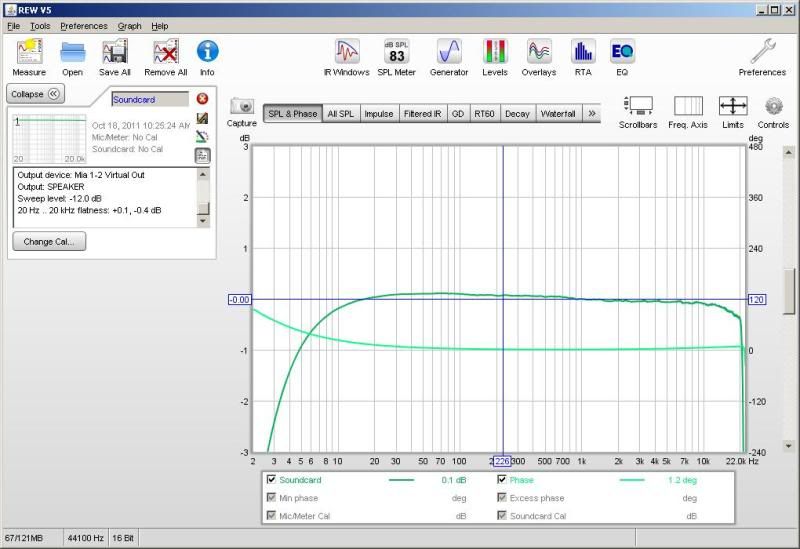
So then I verified that I had the lastest Babyface drivers and H/W version (1.010 and 184 respectively) and I verified that there were no EQ settings active in TotalMix, which there were not (image shows TotalMix settings during sweep test):
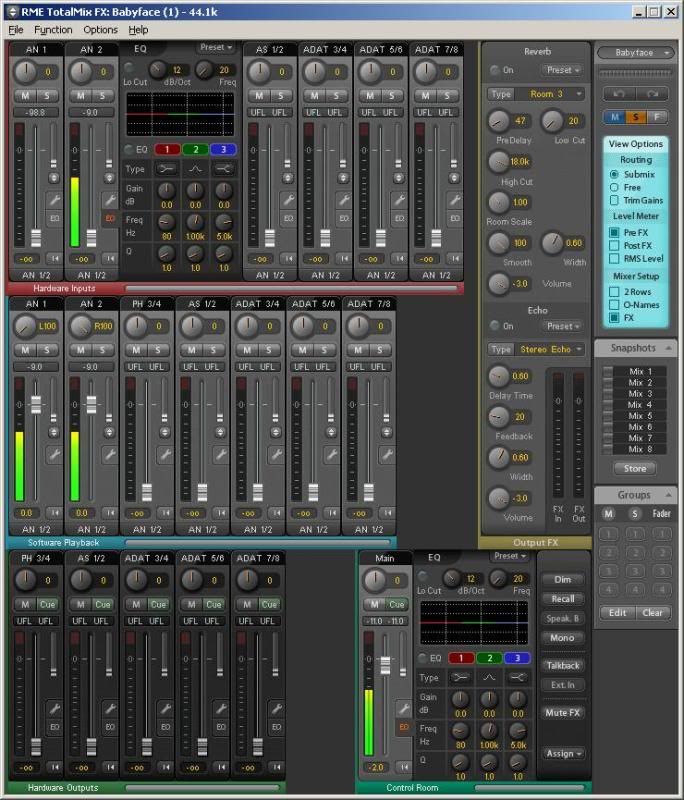
I'm hoping I overlooked something here, because these results aren't even close to spec.
Can anyone replicate this? (REW is free software, so you can easily check, just use the calibration wizard in the soundcard tab in Preferences of REW).

